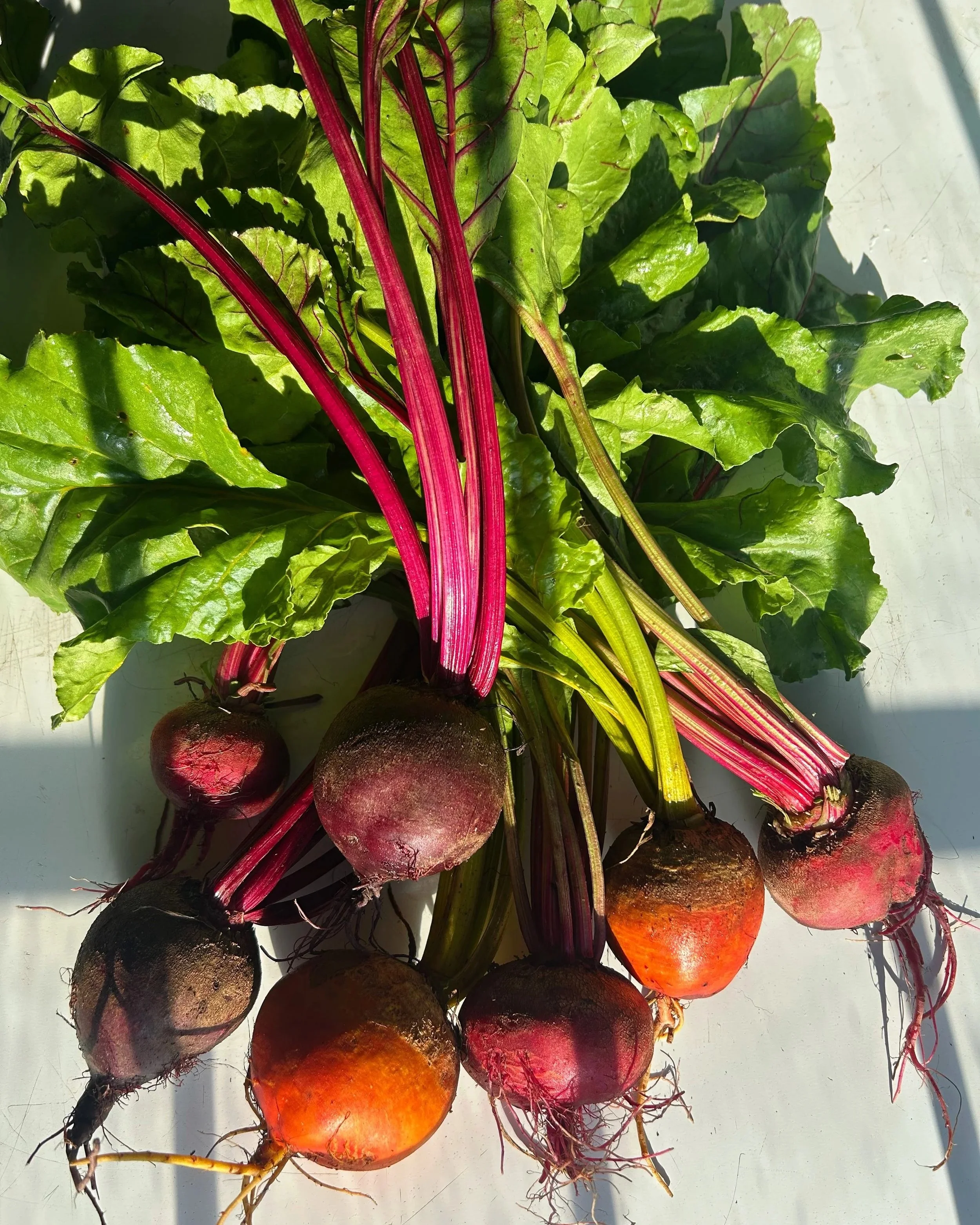Beets
Beets are root vegetables classified as tubers, meaning they store nutrients underground for the plant. They grow from small, round seeds that produce both a leafy top and an edible root. The root’s flavor is sweet and earthy, with red beets having a stronger, more robust taste, and yellow (or golden) beets being milder and slightly sweeter.
Both red and yellow beets get their color from natural pigments: betalains in red beets give the deep crimson hue, while yellow beets contain xanthophylls, which create their golden color. The greens are tender, slightly bitter, and pack a similar nutrient density to other leafy greens like chard or spinach.
Wash & Store
Separate Greens from Roots: Cleaning is easiest when they’re separated.
Greens: Submerge in water and spin dry in a salad spinner. Store in a bag with a paper towel to absorb moisture.
Roots: Scrub beets well and hand dry. Keep unwashed beets in a cool, dry place or in the fridge for longer storage.
How to Use Beet Roots
Steam: Use a steamer basket or place in a baking dish with a little water, cover with foil, and cook until a fork slides in easily. Once cool, peel under running water or rub with a paper towel—the skin should slip right off.
Roast: Coat whole beets with oil and salt for deeper caramelization. For faster cooking, peel, cut, season, and roast pieces.
Shred/Blend: Peel and shred raw into salads or blend cooked beets in dips and sauces.
Season/Marinate: Dress with oil, vinegar, or citrus. The flavor deepens as they sit, and they’ll last up to a week once cooked.
Roast beets to easily peel off the skin.
How to Use Beet Greens
Sauté with olive oil and garlic.
Beet greens can also be used in soups, or blended into smoothies.
Featured Recipes
Click below to view full recipes:
Beet Health Benefits
Nutrient Dense: Vitamins A, C, K; minerals like potassium, magnesium, iron.
Support Heart Health: Naturally occurring nitrates can help lower blood pressure.
Anti-Inflammatory: Rich in antioxidants, including betalains.
Digestive Support: High fiber promotes gut health.
Don’t Forget the Greens: Often more nutrient-dense than the roots, with calcium and vitamin K.
Beet Facts
Originally cultivated for their greens rather than roots.
Red beets’ deep color comes from betalains, antioxidant-rich pigments.
Golden beets are milder, sweeter, and won’t bleed in salads.
Beet seeds are clusters; each cluster can grow multiple plants.
Beet juice has been used as a natural food dye, and even used to dye textiles.
Area 2 Farms for Locals
Your food should be equally accessible and nutritious. Which is where we come in. At Area 2 Farms, we grow fresh organic produce within 10 miles of you.



